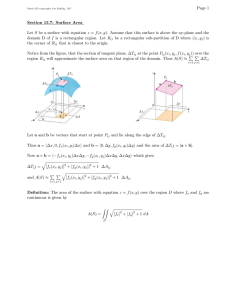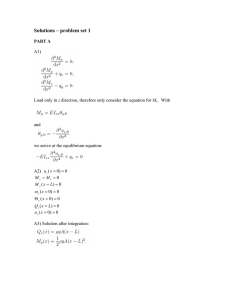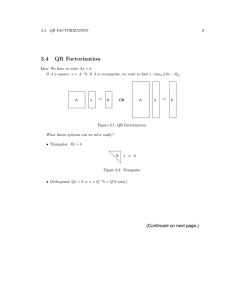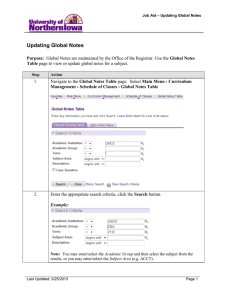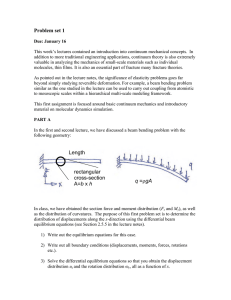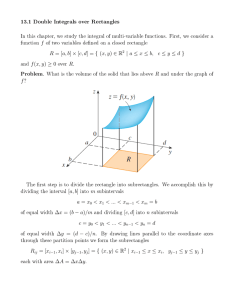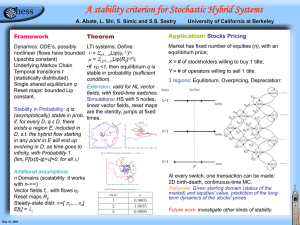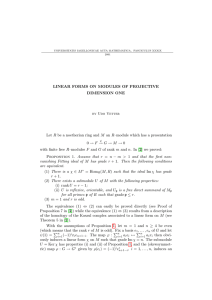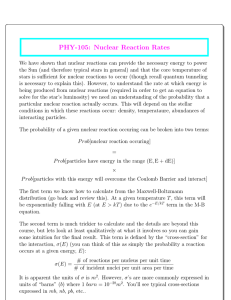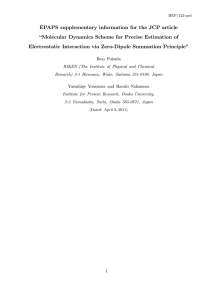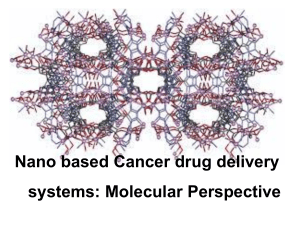Homework 1 — CS 594 only! — Due: Sept.... General Instructions
advertisement
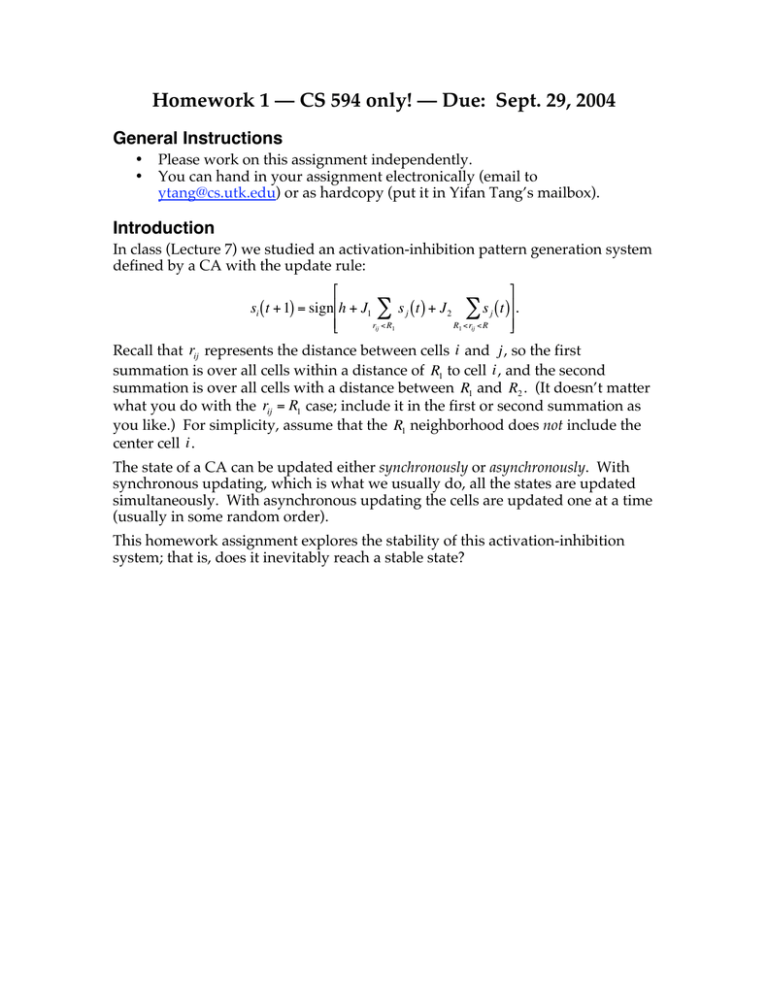
Homework 1 — CS 594 only! — Due: Sept. 29, 2004
General Instructions
•
•
Please work on this assignment independently.
You can hand in your assignment electronically (email to
ytang@cs.utk.edu) or as hardcopy (put it in Yifan Tang’s mailbox).
Introduction
In class (Lecture 7) we studied an activation-inhibition pattern generation system
defined by a CA with the update rule:
si ( t + 1) = sign h + J1 s j (t ) + J 2 s j ( t ) .
rij <R1
R1 <rij <R
Recall that rij represents the distance between cells i and j , so the first
summation is over all cells within a distance of R1 to cell i , and the second
summation is over all cells with a distance between R1 and R2 . (It doesn’t matter
what you do with the rij = R1 case; include it in the first or second summation as
you like.) For simplicity, assume that the R1 neighborhood does not include the
center cell i .
The state of a CA can be updated either synchronously or asynchronously. With
synchronous updating, which is what we usually do, all the states are updated
simultaneously. With asynchronous updating the cells are updated one at a time
(usually in some random order).
This homework assignment explores the stability of this activation-inhibition
system; that is, does it inevitably reach a stable state?
Problems
Problem 1
Prove that if the states are updated asynchronously, then the CA must reach a
stable state.
Hint: Define the following function (called an energy or Lyapunov function) of the
total state of a CA:1
E {s( t )} = 12 si ( t )2h + J1 s j ( t ) + J 2 s j ( t ) .
i
rij <R1
R1 <rij <R
Show that updating any single cell, according to the state update rule, cannot
increase this function (that is, E 0 ). What else do you need to show in order
to guarantee convergence to a stable state?
Extra Credit: Assume that the R1 neighborhood does include the center cell, and
explore any additional assumptions that might be needed to guarantee
convergence.
Problem 2
Prove, by exhibiting a counter-example, that if synchronous updating is used,
then the CA may not reach a stable state.
Hint: Construct a very simple CA, obeying the above state update equation, that
cycles between two different states.
1
For this energy function, look in Bar-Yam on p. 630 (section 7.2.2) and p. 170
(sec. 1.6.6).
